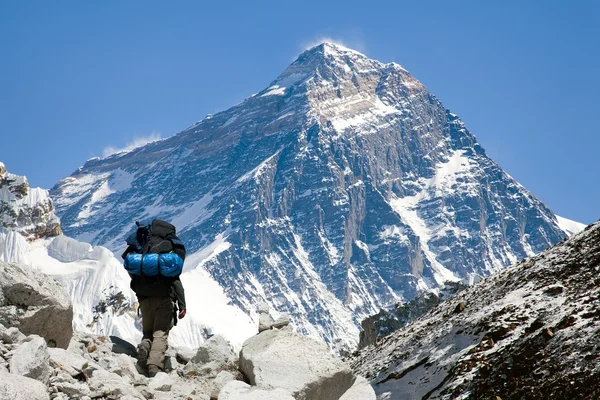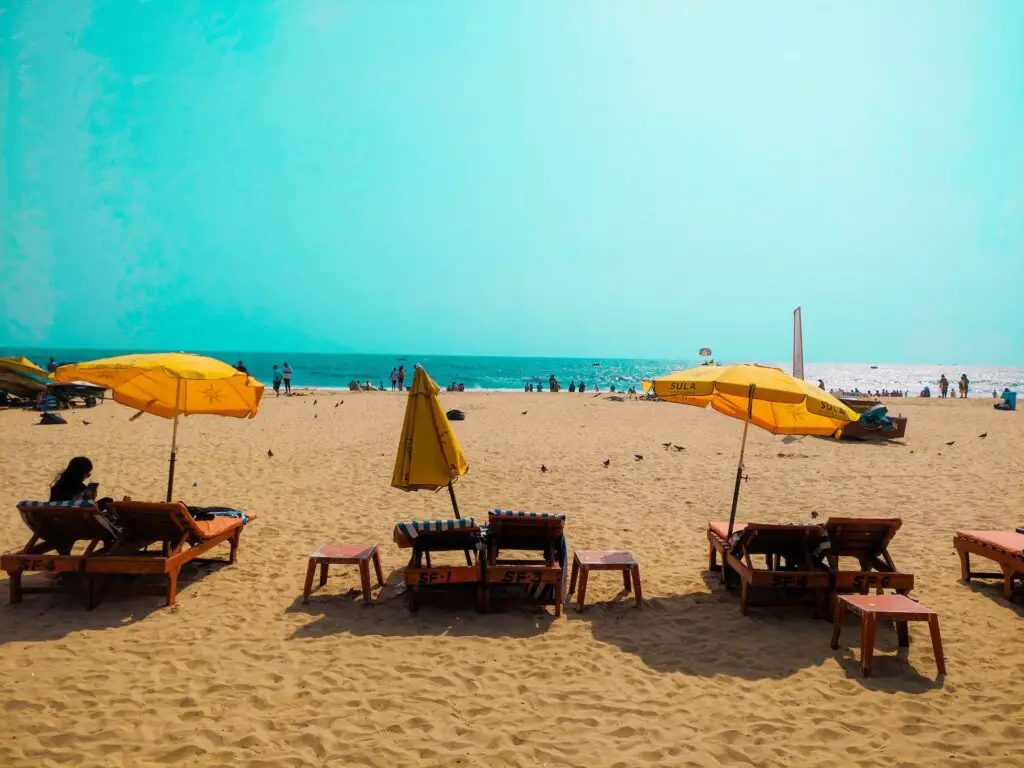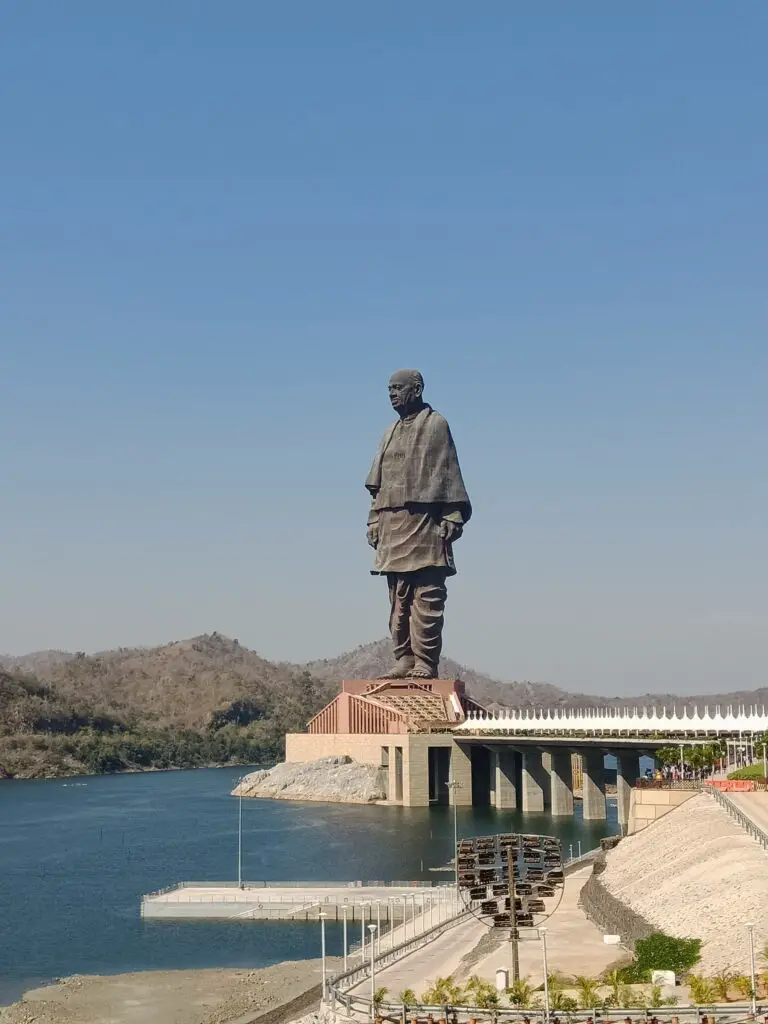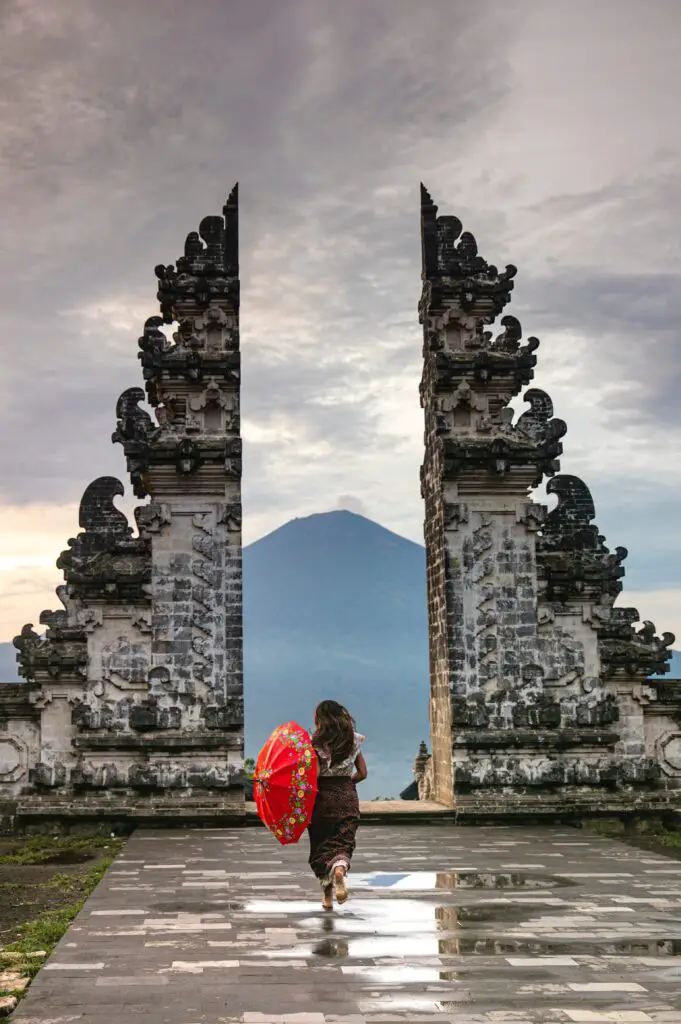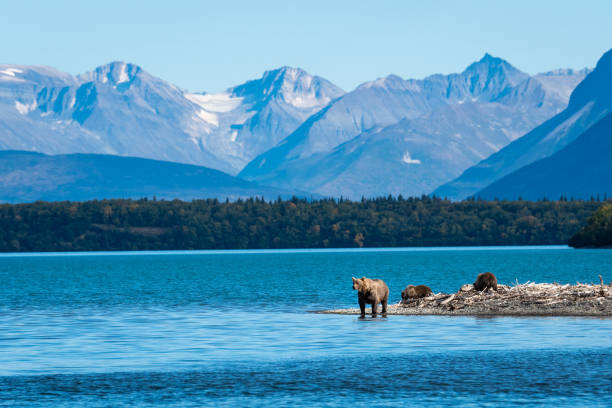
Katmai National Park located in the remote area of southern Alaska often known for good numbers of active volcanoes, incredible brown bear population, rugged coastlines, ten Thousand Smokes, wildlife and vast wilderness areas. Making it a great place to enjoy hiking, fishing, kayaking and backcountry camping.
Park noted as an ideal place to see pristine lakes, mountain ranges, marshlands and abundant wildlife, where good numbers of grizzly (Alaskan) Brown Bears exist. Additionally Katmai is home to moose, wolves, caribou, foxes and wolverines and other bird species.
One of the largest wilderness national parks in the United States (4th largest in US by the National Park Organisation), designated as a national monument in 1918 after the Novarupta Volcano eruption. During 1980, this Katmai monument was recognised as the national park with a total area coverage of 5,741 square miles.
Related Articles: Best National Parks to Visit in US.
History of Katmai National Park

Katmai National Park has a great past history, generally speaking about its early settlements and 20th century massive volcanic eruptions. Here we have bifurcated Katmai National Park history into 3 major periods. Let’s discuss its history in depth.
1. During Early Settlements
Like other popular destinations and national parks, Katmai National Park also has a great indigenous history. The region was once fully controlled and managed by the Alaska Natives, notably the Alutiiq and Yupik peoples. They exclusively relied on the region’s rich resources for leading their life and were often involved in many cultural practices. Usually these indigenous local tribe’s hunted seals, caught fishes and gathered plant materials from surrounding regions to run their daily lives.
2. During 1912 Volcanic Eruption

One of the national parks crucial historical part is the incident of 1912 eruption of Novarupta. This massive eruption made it as the largest volcanic eruption of the 20th century, which began 6, June 1912 and lasted after 60 hours of continuous eruptions. According to some estimates, 1912 eruptions expelled 13 to 15 cubic miles of ash and lava, creating a valley of ten thousand smokes. Later periods of time, these vast ash flows filled into large valleys and shaped landscapes in a very unique way.
3. Recent Developments
Despite its tragic past, Katmai National Park is also witnessing recent developments and initiatives to boost tourism. During the late 19th century and early 20th century the park was protected as national monuments and home to rich ecological and geological significance. But later during 1980, this park was designated as the Katmai National Park and Preserves giving more push to wilderness areas, diverse wildlife, home to vast volcanic landscapes and cultural past.
Along with its pages of history, Katmai also passed with great cultural values and legacy. Starting from indigenous communities who once owned the land and made cultural and traditional practices to today’s brown bear protection tactics.
Types of Plants in Katmai National Park
There are a number of plant species in Katmai National Park that assist to improve the park’s species and biodiversity richness. There are number of unique plant species available through national parks to explore.
1. Volcanic Terrain Plants
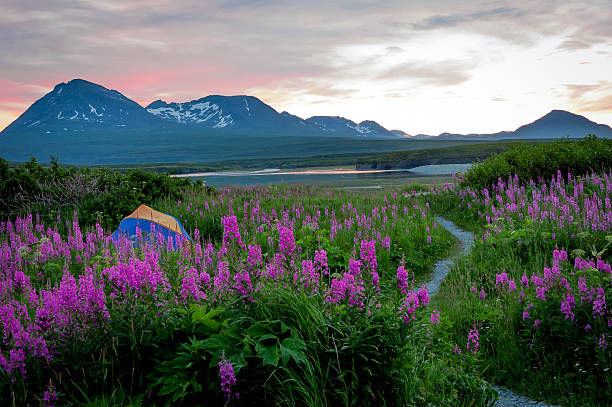
Since Katmai contains vast volcanic terrain landscapes which lasted in 1912 witnessed to help to grow wide areas of unique vegetation with ash. Species like mosses and lichens begin the process of ecological succession resulting in other plants to establish.
2. Wildflowers and Grasses

National park also includes countless wildflowers and grasses which bloom during the summer season. Bright lupines, bellflowers, fireweed and asters are more popular wildflowers spread across landscapes. Additionally, Grasses and sedges are available to watch in park’s wet and marshy areas.
3. Tundra and Alpine Plants

In the region of Arctic adjacent tundra, low and small growing plants like mosses, lichens, sedges and wildflowers like forget-me-nots and ferns are abundant. Usually located where harsh weather and more volcanic soils are more prominent. Interestingly these plants grow very low and short growing season plant species.
4. Shrub Plants

Katmai National Park is also witnessing a small amount of shrubs and other forest plants. Plants like Stika spruce, western hemlock and alder are perfect examples of shrub plants. These sorts of species usually grow under a milder and moister environment. Interestingly visitors spot Shrub and Forest areas near waterways and the southern part of the park.
Size of the Katmai National Park
Katmai National Park spread across 5,741 square miles or 14,869 square km, making it one of the largest national parks in the United States. Its vastness and wilderness make it easy to spot diverse range plant species and wildlife. Additionally park areas include glaciers, volcanic mountains and extensive coastlines to explore.
Katmai National Park and Preserve Tickets
Access to Katmai National Park is free of cost but boat or plane trip through tour operators requires permits and reservation. Tour packages typically include $15 per person (walk in visitors) and $25 per vehicle.
Note: Visit Recreation.gov to known more about entry price, permits and reservation of park’s camping, kayaking, and other recreational activities.
10 Fun Facts about Katmai National Park
- Katmai National Park is home to the premier Brown Bear viewing area in the world. Approximately 2,000 grizzly or brown bears are currently living here.
- Katmai is home to hundreds of different plant species. Such as wildflowers, shrubs, mosses, lichens, black and white spruce and other trees.
- Currently Katmai has 14 active volcanoes, making it the world’s active volcanic region.
- Park includes some of the country’s best hiking trails such as Brooks falls trail, cultural Site trail, and Ten Thousand Smoke Road.
- Early inhabitants were found in Katmai National Park around 6,000 years ago. The Inuits and Yupikas are 2 distinct indigenous tribes inhabiting this land.
- Under Katmai National Park, Brooks Falls is a popular place to get a perfect view of Brown Bears. Where only 40 people are allowed at a time with its 1 hour of timings.
- Russian’s the first Europeans who arrived at Katmai National Park. These Russians came up with advanced weapons, technologies and some rare diseases that gradually vanished local indigenous tribes.
- There are 43 different species of mammals that exist in Katmai. From coastal to lake regions, mammals like caribou, red fox, wolf, river otter, mink, marten, Wesel, snowshoe hare, red squirrel and beavers exist.
- Under this park, the Pacific Ocean is the lowest point and Mount Dennison is the highest point which is 7,606 feet above sea level.
- During 24 September 1918, designated as a national monument due to its 1912 Novarupta volcanic eruptions, later formed as a Valley of 10,000 smokes. Later 12 December 1980, Park also got national park recognition.
How to Get to Katmai National Park
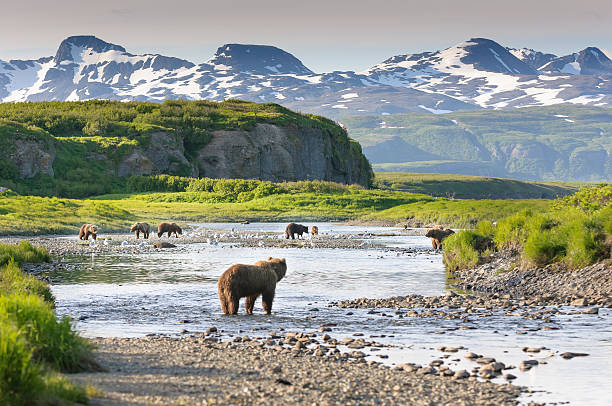
Since it is located on the northern Alaska Peninsula, and close to the Kodiak Island and Homer, Alaska, Katmai National Park is not easily accessible through many major transportations points. Below 2 major transportations modes help to catch Katmai in a very cost effective manner.
1. By Air Taxi Flights
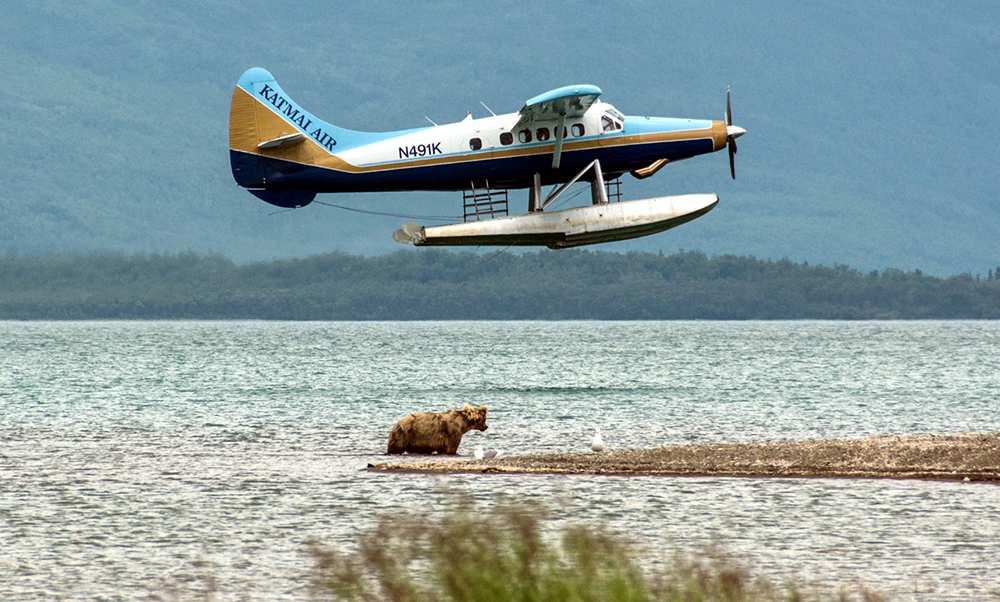
There are good numbers of direct air taxi flights available from Homer, Dilingham, Anchorage, King Salmon, and Kodiak and nearby Alaska towns and villages. Visit Fly Katmai to book your air taxi flights and considered is one of the easiest and convenient ways to reach Katmai, which operates regularly. Its cost depends upon individual size, types of airplane, length of flights and starting point of air taxi flights. Choose Alaskan Airlines to get better experience which start from Ted Stevens Anchorage to King Salmon.
2. By Boat
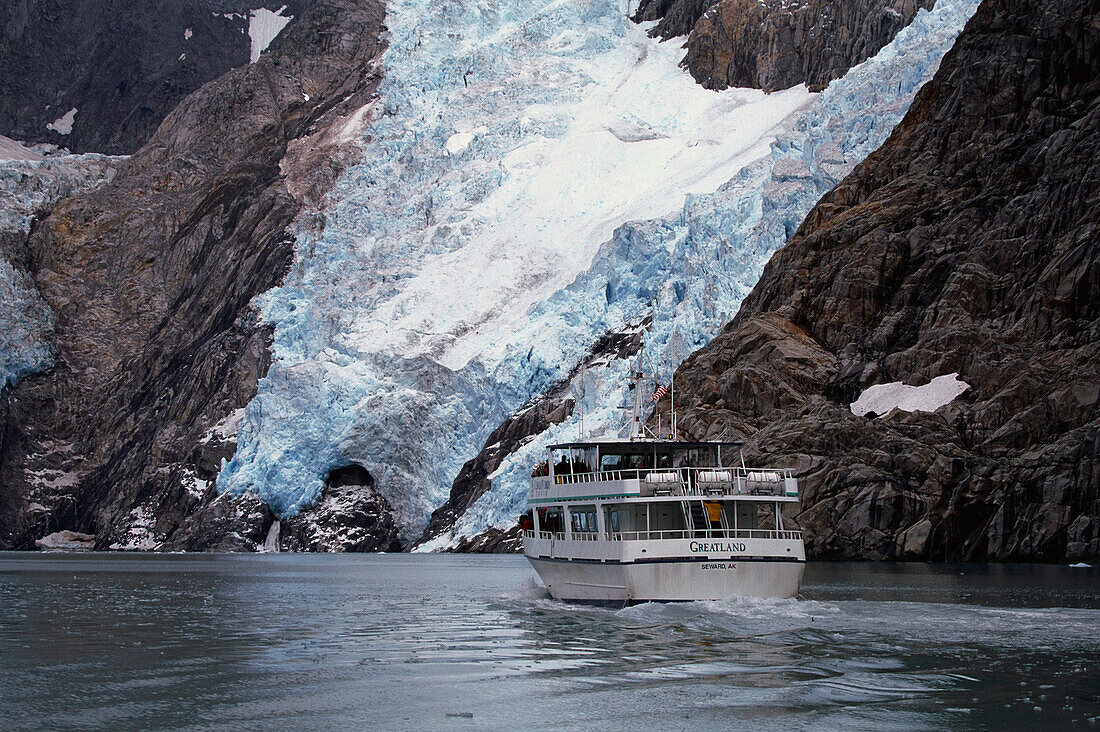
Those who are looking for a cost effective way to reach Katmai National Park, surely they can choose a boat. Access to the Pacific coast of Katmai, including Brooks Camp and other major park locations, could be reached through Naknek River Boat transportation. Additionally, Katmai even accessible through water taxis such as Katmai Water Taxi Services that run daily from King Salmon to Brooks camp.
What is the Best Time to Visit Katmai National Park?
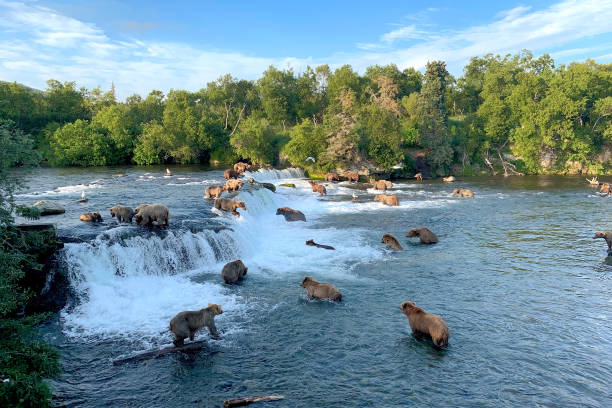
Visiting Katmai National Park is heavily based on watching the region’s top attraction “Bears” at Brooks Falls or Katmai Bear Viewing. So, it is very friendly to watch and experience during late June and late July, when the highest numbers of bears are concentrated here.
Despite that, Visitors also visit even during June to September, when the park witnessing accommodations, and transportations are fully available. Make sure that choosing stay in Brooks Lodge located nearest to the park, which help us to catch both air taxi flights and water boast to reach Katmai.
Additional Links: For Katmai National Parks History, Geology and Ecology refer: EBSCO.
For Katmai Bear Viewing: Flyrust and Alaskabear adventures.
Related Articles: Isle Royale National Park.

